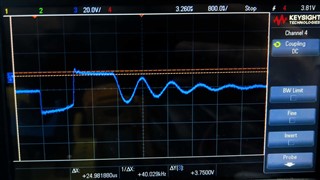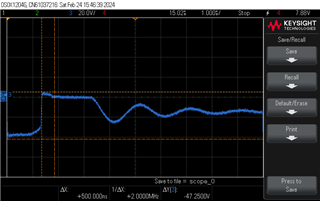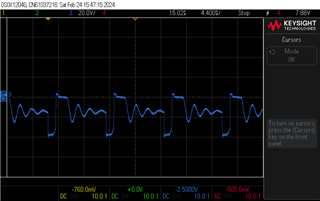Other Parts Discussed in Thread: UCC28C56EVM-066, UCC28C50
Hey TI Team,
I hope you are doing well.
We are using TI's current-mode PWM controller IC (UCC28C50QDRQ1) for our flyback converter in our ongoing project. Below are the specifications for the flyback converter:
Flyback Converter Specifications
| Flyback Converter Specifications | |||||
| Sr. No. | Parameter | Min | Typ | Max | Units |
| 1 | Input voltage | 60 | 100 | 150 | V |
| 2 | Output voltage | 12.5 | 13 | 13.5 | V |
| 3 | Power | 30 | W | ||
| 4 | Current | 2.2 | 2.3 | 2.4 | A |
| 5 | Switching Frequency | 100 | kHz | ||
| Transformer Specifications : 750343803 | |||||
| 1 | Np:Ns | 5.5 | |||
| 2 | Np:Na | 4.14 | |||
| 3 | Primary Inductance | 75.00 | uH | ||
We've encountered the following issues and taken initial steps to address them:
- Load regulation issue: The output voltage decreases significantly from 13.5V to 7V when the load varies from 0A to 2.5A. We resolved this by replacing the schottky diode with a PN diode in the PSR network at the auxiliary winding, successfully addressing the output voltage dropping issue.
- Diode heating: Despite diode replacement efforts, the diode temperature reaches to 100°C, even with a 1W PN diode, raising concerns about thermal management.
- Output voltage instability: Despite the implementation of a zener diode at the output, the voltage continues to rise in a no-load condition, a behavior not observed with the original schottky diode. However, a 0.5W zener diode proves insufficient and overheats.









